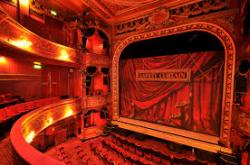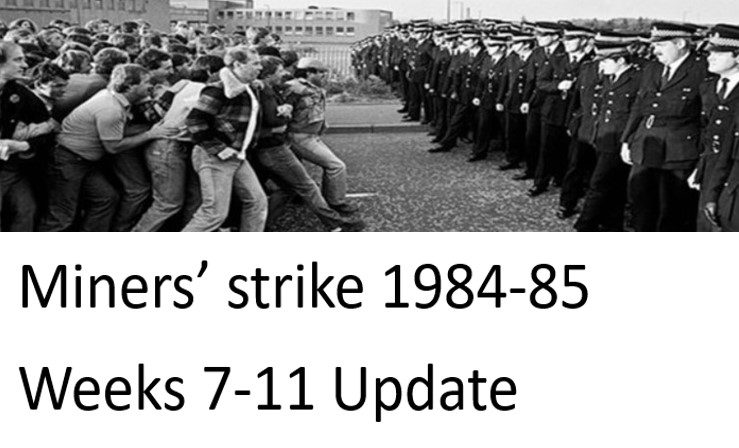By Joe Langabeer, Enfield South LP and BECTU member
The Labour movement has had a fascinating and historically healthy relationship with the Arts. In 2019, the Labour Party led by Jeremy Corbyn developed an Arts Manifesto that presented a plan to give appropriate funding and support to the artistic community.
This manifesto was also supposed to produce a “cultural renaissance,” conceiving Art within local communities. Unfortunately, due to the results of the 2019 general election, this did not come to pass. The Conservative party have currently committed to an ‘Arts Premium,’ which would facilitate children’s access to the creative industry. The results are, however, yet to be seen, especially in a moment such as this when external funding is directed towards other non-artistic projects.
In this article, we will look at the historical significance the Labour Party has always put on the Arts. In particular we will focus on the challenge to its historical approach posed in more recent times by the New Labour leadership, the Corbyn-era programmatic support of wide accessibility, and the future brought by the newly elected leader Keir Starmer with the potential shift he could champion from the left-wing policies we had previously seen under Jeremy Corbyn.
The Labour Party has always supported the funding of artistic endeavours. The Arts Council was created in 1945 under the Labour government and was initially chaired by John Maynard Keynes, a Labour politician. The development of the Arts Council became stagnant until Harold Wilson’s Labour government of 1964, which initiated a ‘golden age’ of funding. A network of arts organisations across the country was set up and included Scotland and Wales. This led to the production of a wide variety of artistic works that mainly focused on politics and were widely accessible to all, instead of being available only to the London artistic movement.
In Bringing Down the House: The Crisis in Britain’s Regional Theatres, Olivia Turnbull gives an account of the issues that arose during the process of organising the Arts Council. A policy that became prolific for the institution was the ‘arms-length’ approach to artistic funding and the development of projects according to the principle that arts should not be funded purely on political value.
This caused disruptions within the artistic community and among companies, unsure about whether they would be allowed to keep their funding as they were inherently political. By the time that Thatcherism and the neo-liberal agenda started to mould itself into the economic structure, the Arts Council of Great Britain had started to lose its funding and a commercially-driven narrative had begun.
Lottery funding
The National Lottery was launched in 1994 by John Major, the conservative Prime Minister who had created some funding for the cultural sector, not nearing however the amount firstly presented during the development of the Arts Council in the 1960s and 1970s.
By the 1997 election, won by New Labour, the artistic community had been completely disenfranchised with the government in regards of public funding for the arts. New Labour under Tony Blair launched initiatives and funding for support networks to help strengthen cultural institutions and create a wider means of accessibility. The strengthening of Arts Council funding did not push back the neo-liberalist ideology that has plagued artistic value, but it helped establish prominent figures and writers who still occupy a prominent position in the 21st century.
In Theatre, particularly influential are Martin Crimp, Caryll Churchill and Simon Stephens. These important playwrights have been championing political theatre and have criticized capitalism’s effects on society. To do so, New Labour helped to fund new initiatives for playwrights in subsidized theatres such as the Royal Court Theatre. This has all been accounted by Vicky Angelaki in Social and Political Theatre in 21st-Century Britain: Staging Crisis.
New Labour were also successful in terms of accessibility, as they launched free entry passes for several museums and exhibitions to help provide a higher cultural development for all. These steps, although in the right direction, did not pose enough of a challenge to the commercialised sector and its domination of artistic institutions.
Austerity rules all
When the Tory-Liberal Democrats coalition came to power in 2010, they presented a programme of austerity measures in response to the failures of neo-liberalist economics. The Arts were one of the industries affected the hardest by these policies. This has effectively led to small commercial companies offering exploitative conditions for artists, without providing any means to the industry to counterbalance and stop this exploitation.
It has also helped maintain the top commercialised companies in dominant positions, and, topped with cuts that damaged Arts projects and youth communities, it has decreased productivity within the artistic industry. The result was a disenfranchised feeling like the one felt in the 1990s before New Labour came to power.
Jeremy Corbyn was an outspoken politician who believed in the values of socialism, the foundations of the labour movement, and championed artistic industries. He planned to pledge better funding for the arts and promoted a decentralisation of funding to other parts of the country, which had been affected the most by austerity. His 2019 Arts Manifesto included a plan to subsidise artistic venues to release a wide variety of work that could be accessible to all, but Boris Johnson’s victory prevented it to become a reality.
We need a new model
Where do we go from here? The fortunate relationship between the Labour Party and the Arts has guaranteed a continuous effort from the first to support accessibility and to increase funding. Prospect in The creative industries are hurting, not helping artists—we need a new model argued that New Labour’s approach developed the commodification of arts.
We, as Art-Rising, would argue that it helped continue the journey of commodification that was intrinsically structured during Thatcherism and promoted by neo-liberalism. It still, however, maintained an appropriate source of funding for the subsidized sector and provided accessibility for all.
What must follow, especially now that the coronavirus pandemic has revealed the extended failures of capitalism, is a nationalisation of the artistic industry to allow a wide collection of artistic approaches, informed by a variety of programmes delivered by state-run artistic venues, to challenge the value and aesthetics of Art.
The Labour movement and the Arts run hand in hand, and in a time where a shift away from the left within the party might be happening in the foreseeable future, it has never be more crucial to join the Labour Party and fight for these demands. Members have the power to challenge the policies at the conference, while artists must make sure that we are there to challenge these policies and shift them towards a socialist direction of state ownership. That will be the only alternative for the arts at this present crisis.
May 13, 2020



